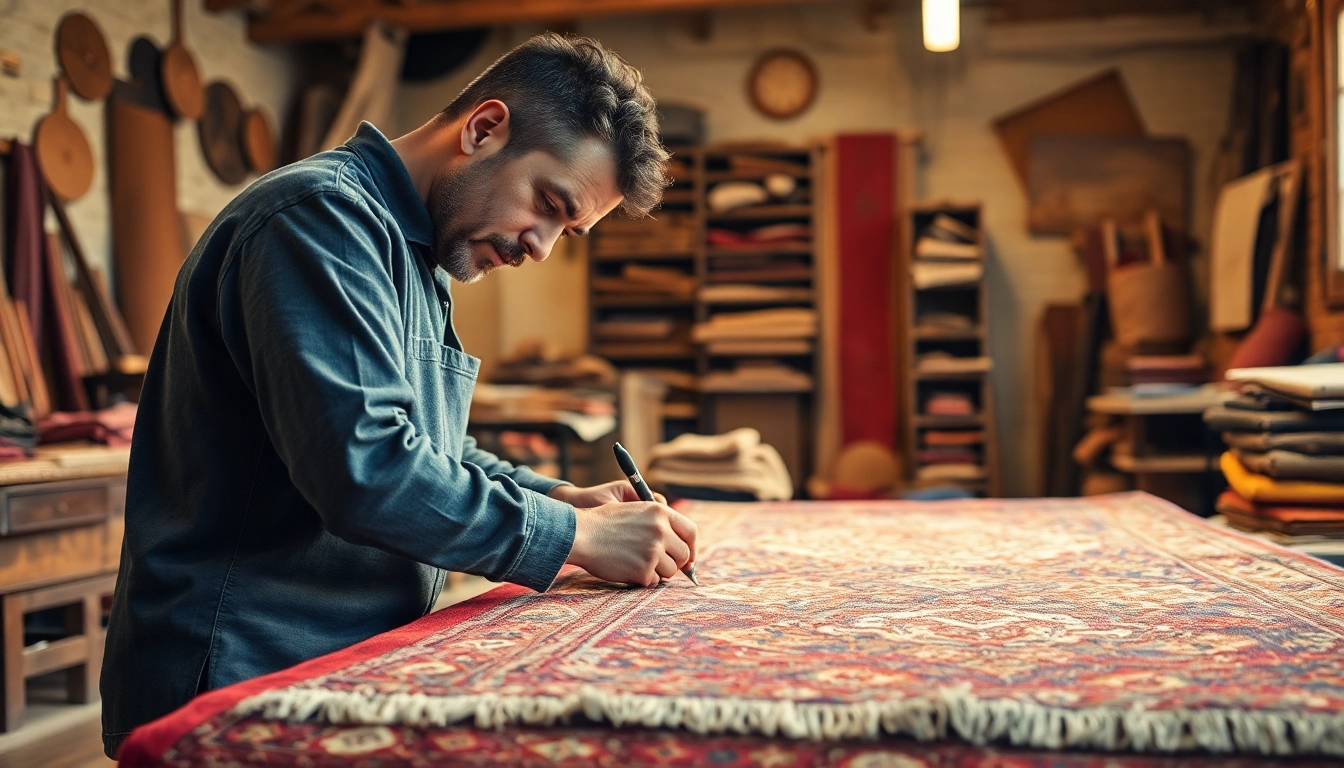Understanding the Importance of Restauro Tappeti Milano
In the vibrant cultural hub of Milan, where historical artistry and contemporary design coexist, maintaining the beauty and integrity of valuable rugs is essential. Whether you own an antique Persian rug or a modern Turkish kilim, proper care and restoration are crucial for preserving their aesthetic, cultural value, and longevity. Restauro Tappeti milano has become a trusted solution for discerning homeowners and collectors alike, offering expert services tailored to the unique needs of each piece.
Why Professional Restoration Matters
While routine cleaning can keep a rug looking fresh, it cannot address deeper damages such as tears, fraying, staining, or color fading that result from aging, mishandling, or environmental factors. Professional restoration ensures that these issues are expertly managed, restoring the rug’s original beauty while maintaining its authenticity. Skilled artisans use refined processes that respect traditional craftsmanship or leverage innovative techniques to achieve the best results, ensuring stability and durability over time.
Common Dangers to Antique and Modern Tappeti
The life of a rug is often compromised by several threats, including exposure to sunlight, moisture, pests, and improper cleaning methods. For antique pieces, especially those with cultural or historical significance, neglecting timely repairs can lead to irreversible damage. Modern rugs are also vulnerable to stains, fraying edges, and mechanical damages from foot traffic. Recognizing these dangers emphasizes the importance of early professional intervention to prevent further deterioration.
Benefits of Skilled Restauro Services
Investing in professional restoration provides multiple advantages: it prolongs the lifespan of your rug, enhances visual appeal, and can significantly increase its monetary value. Moreover, restorers use specialized techniques to carefully match original dyes, repair damaged fibers, and reinforce weak areas, ensuring every detail is preserved accurately. This process not only restores the appearance but also revitalizes the cultural integrity of each piece.
Step-by-Step Guide to Restauro Tappeti Milano
Initial Assessment and Damage Evaluation
The restoration process begins with a comprehensive inspection conducted by experts. They evaluate the extent of damage, identify the types of fibers, dyes, and weaving techniques employed, and determine the most appropriate restoration method. This step ensures that the process is tailored specifically to the rug’s material and condition, laying the groundwork for successful restoration.
Cleaning and Surface Preparation
Before any repairs, deep cleaning is essential to remove dust, dirt, and residues that could interfere with restoration work. Professionals use gentle, precise methods such as dry or wet cleaning with specialized solutions that respect delicate dyes and fibers. Proper cleaning not only improves visual quality but also reveals damage that might be hidden beneath accumulated grime.
Repair Techniques for Tears, Frays, and Stains
Depending on the damage, restorers employ various techniques such as reweaving, patching, knot repair, and dye retouching. For tears and frayed edges, delicate reweaving with historically accurate fibers is crucial. Stain removal involves tailored cleaning agents that do not compromise original dyes. All repairs are meticulously executed to ensure seamless integration with the original design.
Techniques and Materials in Tappeti Restoration
Traditional vs. Modern Restoration Methods
Traditional restoration emphasizes hand-weaving and dyeing, preserving the craftsmanship passed down through generations. Modern methods incorporate advanced tools such as computerized color matching, fiber reinforcement, and non-invasive repair materials, which speed up processes without sacrificing quality. A blend of these approaches is often used to meet specific restoration goals.
Materials Used for Authentic Restoration
Restorers prioritize using authentic materials, such as natural dyes, wool, silk, and cotton fibers that match original properties. When necessary, high-quality synthetic fibers may be employed for reinforcement but are carefully concealed to maintain aesthetic integrity. This ensures that the repaired sections age similarly to the original parts and retain the rug’s authentic feel.
Innovations Improving Durability and Appearance
Recent innovations include UV-protective coatings, antimicrobial treatments, and reinforced backing materials, enhancing both appearance and durability. These advancements help protect rugs from future damage while preserving their historical beauty, making professional restoration a wise investment for longevity.
Choosing the Right Restauro Tappeti Milano Provider
What to Look for in a Restoration Expert
Top restoration providers possess extensive experience with various types of rugs, employ certified artisans, and utilize advanced techniques. They should also offer transparent assessments, detailed quotes, and guarantee the quality of their work. Certifications from recognized industry bodies indicate professional competence and adherence to best practices.
Questions to Ask Before Restoration
It is crucial to inquire about the methods and materials used, expected timeframes, costs, and after-care services. Clarifying these points helps set accurate expectations and ensures you choose a provider capable of handling your specific needs with finesse.
Costs and Timeframes for Professional Restauro
The cost of restoration varies widely based on factors such as the size, age, damage extent, and complexity of the work. Typically, prices range from $50 to over $1,000. Restoration duration can span from a few days to several weeks, particularly for intricate or antique pieces. Discussing these details upfront helps plan accordingly.
Maintaining and Extending the Life of Restored Tappeti
Care Tips for Daily and Long-term Preservation
After restoration, proper maintenance is essential. Use gentle vacuuming with a soft brush attachment, avoid direct sunlight, and rotate the rug regularly to prevent uneven wear. Additionally, placing protective pads under furniture and avoiding high-traffic areas can prolong its beauty and structural integrity.
Routine Cleaning and Storage Strategies
Periodic cleaning with professional services preserves the restorative work. When storing, keep the rug rolled in acid-free fabric in a dry, cool environment, and elevate it to prevent moisture buildup. Avoid plastic coverings that trap humidity, which can lead to mold and fiber deterioration.
Indicators that Your Tappeti Needs Re-Assessment
Watch for signs such as new tears, fading colors, frayed edges, or persistent stains. If these or any unusual odors develop, it may be time for a professional assessment to prevent further damage and ensure ongoing preservation.
